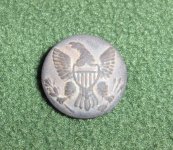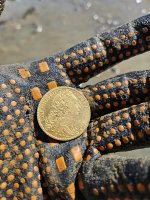West Jersey Detecting
Gold Member
How should I clean old brass buttons? I have not had good results with the peroxide method on flat buttons, but what about uniform buttons?
Here is what it looks like after soaking in warm water and brushing with a soft bristled tooth brush:
Here is what it looks like after soaking in warm water and brushing with a soft bristled tooth brush:




 I have never tried a cleaner like that and would not care for the odor to be in my working room so I will stick with peroxide.
I have never tried a cleaner like that and would not care for the odor to be in my working room so I will stick with peroxide.






